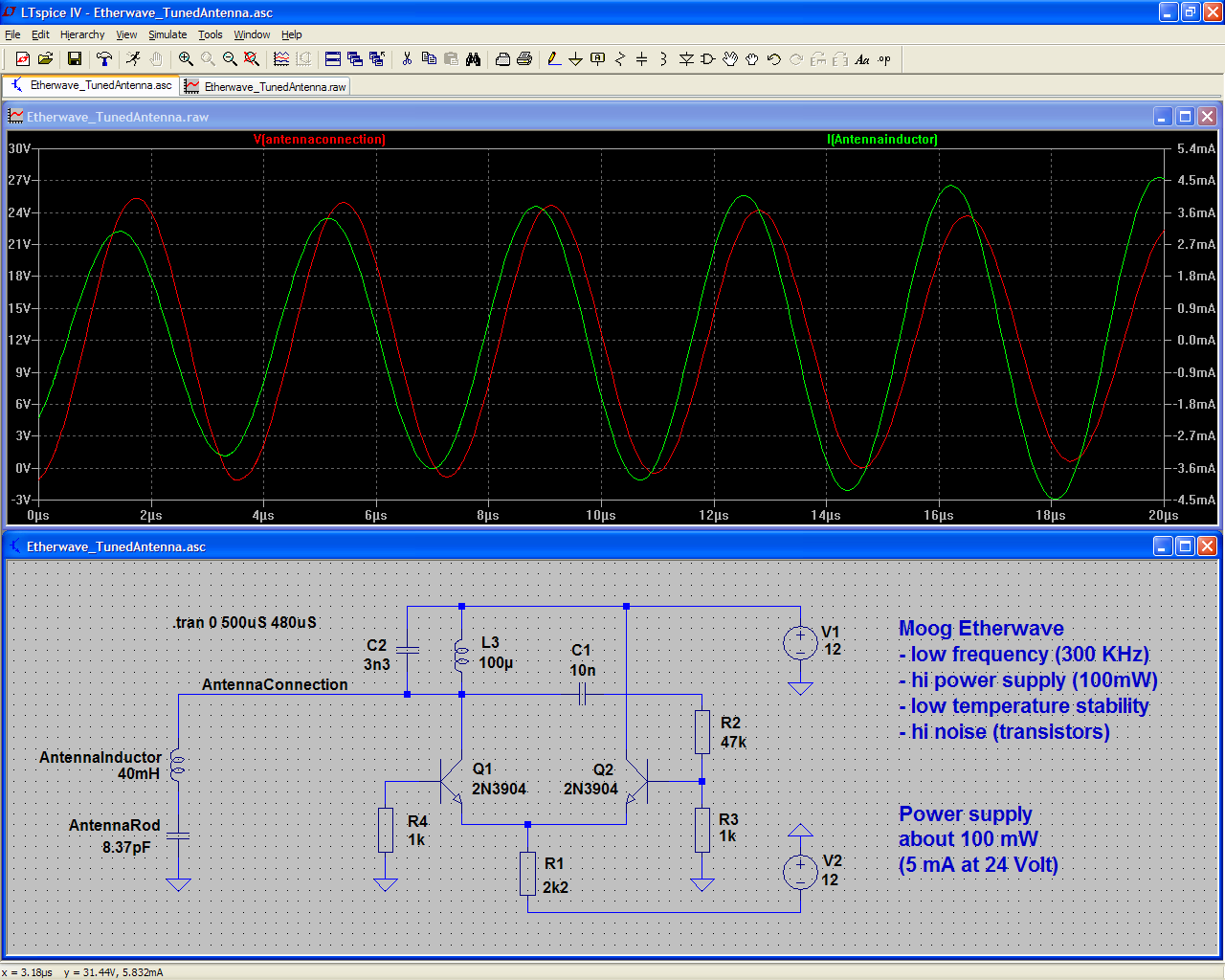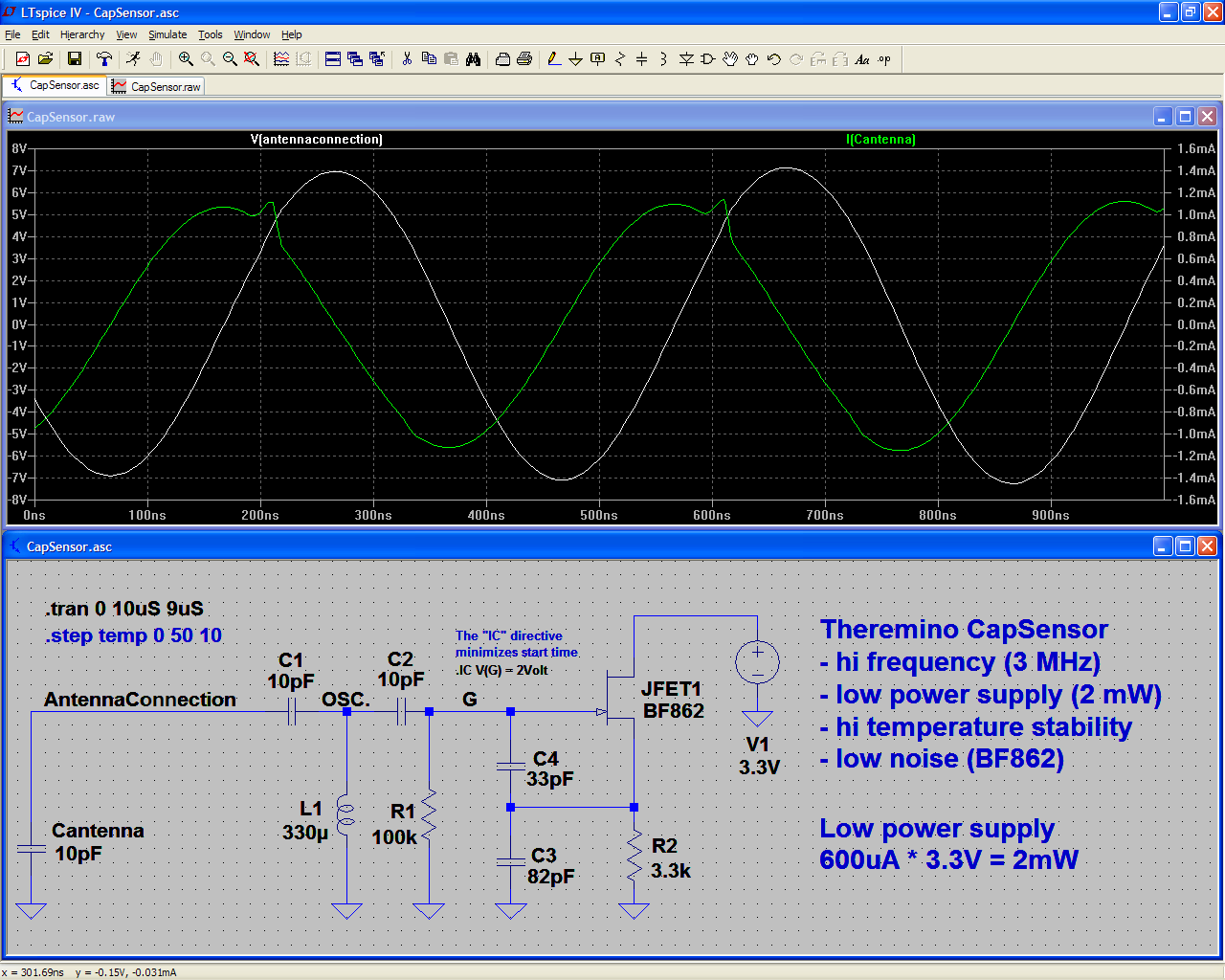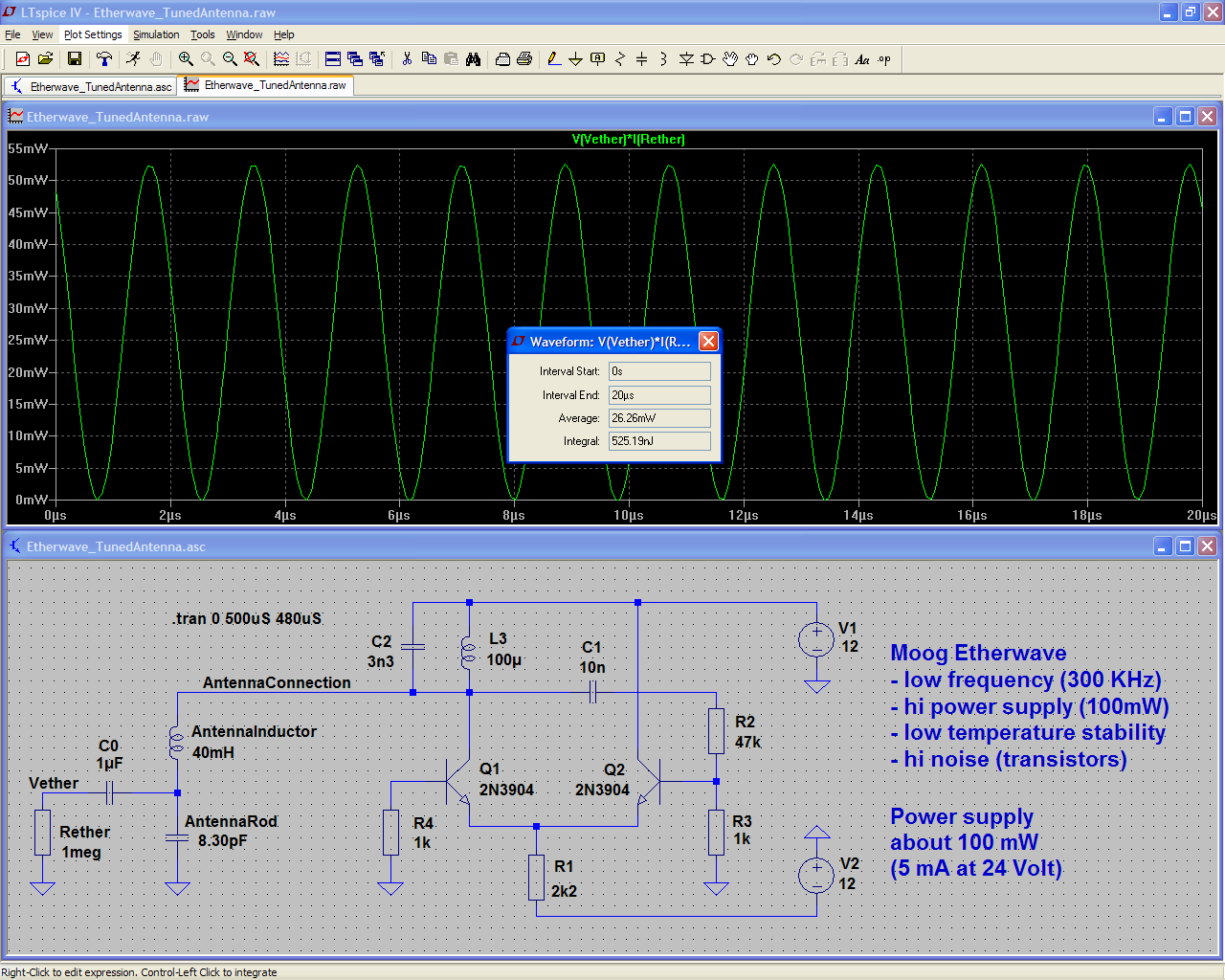"My early test oscillator was 10-20 pF"
Your early test oscillator was 120KHz with 10 mH inductor, if I remeber well. So the total static capacitance was 150 pF, not 10-20 pF. Maybe I have misunderstood the 120KHz and 10 mH? In that case, please, explain this to me.
But I am absolutely sure that OpenThereminUNO has 150 pF of static capacitance and Etherwave even more.
"my newer oscillators have no explicit capacitance other than the antenna capacitance"
Yes, this is the way.
"So the increase in sensitivity you describe is not due to the higher operating frequency."
Yes, using 3MHz is not magical, only a method to reduce (about 100 times) the static capacitance.
"If you are not heterodyning then decreasing the static capacitance and increasing the dynamic capacitance will increase sensitivity the same and regardless of the operating frequency"
Heterodining or not, decreasing the static capacitance and increasing the dynamic capacitance will increase sensitivity, resolution, signal to noise rapport and signal to oscillator stability rapport.
"The vertical axis of that graph is bits/interval"
OK, sorry... I miscalculated because normally I use dB of signal-to-noise.
So the Heterodyning increases the resolution by 4 bit (near) to 8 bit (far) and this means 24 to 48 dB.
Yes this is a dramatical increment of the resolution.
This dramatical increment is important for projects that use a deaf oscillator and an asthmatic processor. But your oscillator is not deaf and your FPGA is hi-speed, so you might do without the heterodyning and all its inevitable disadvantages.
The Heterodining resolution increment is at the expenses of:
- signal to noise ratio
- signal to oscillator instability ratio
- stability (some Khz of change in the oscillator frequency and the etherodining oscillator must be retuned)
- flexibility (difficult or impossible to change the antenna area from 1 cmq to many square meters)
"Both the EW and your designs have a capacitive antenna as part of a resonant LC circuit."
No, they are only apparently similar.
The "Etherwave antenna system" (antenna8pF & inductor40mH) is a true resonant antenna.
Instead our antenna system is very similar to a capacitor
(and minimally also an antenna, but 1000 times less efficient as electromagnetical waves transducer)
The "Etherwave antenna system" is seen by the oscillator as a pure resistor and the oscillator will dissipates a lot of power on it. And this power is all transformed into electromagnetic waves.
Instead our "antenna" is seen by the oscillator as a pure capacitor and theoretically, due to the phase shift between current and voltage the power transferred is zero. In practice, even our capacitor, although not tuned with a 40mH inductor, also has a minimum impedance (say a few tens of uH) and this means that there is a minimum emission of electromagnetic waves (50 uW). But this is only a side effect and should be avoided as much as possible (reducing the height, increasing the width and absolutely not using a tuning inductor)
"That's a factor of ~1,000,000 which on it's face seems not credible"
The ratio between about 50 mW and about 50 uW is only 1000 - not 1 000 000
Consider also that the power is proportional to the square of the voltage (or the current)
So a power ratio of 1000 is simply produced by a ratio of 30 in voltage or current.
I am preparing a precise simulation of the currents, voltages, and phase displacements.
I will post it in some hours.




